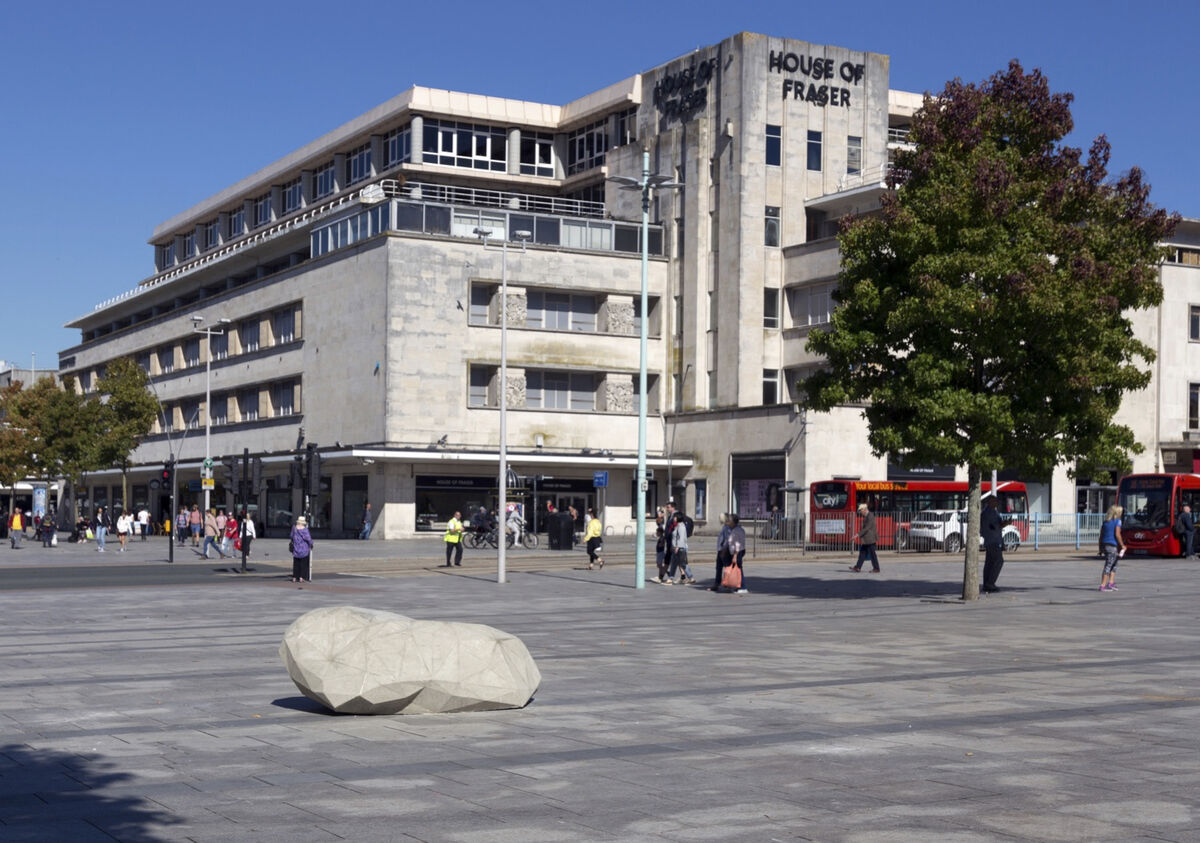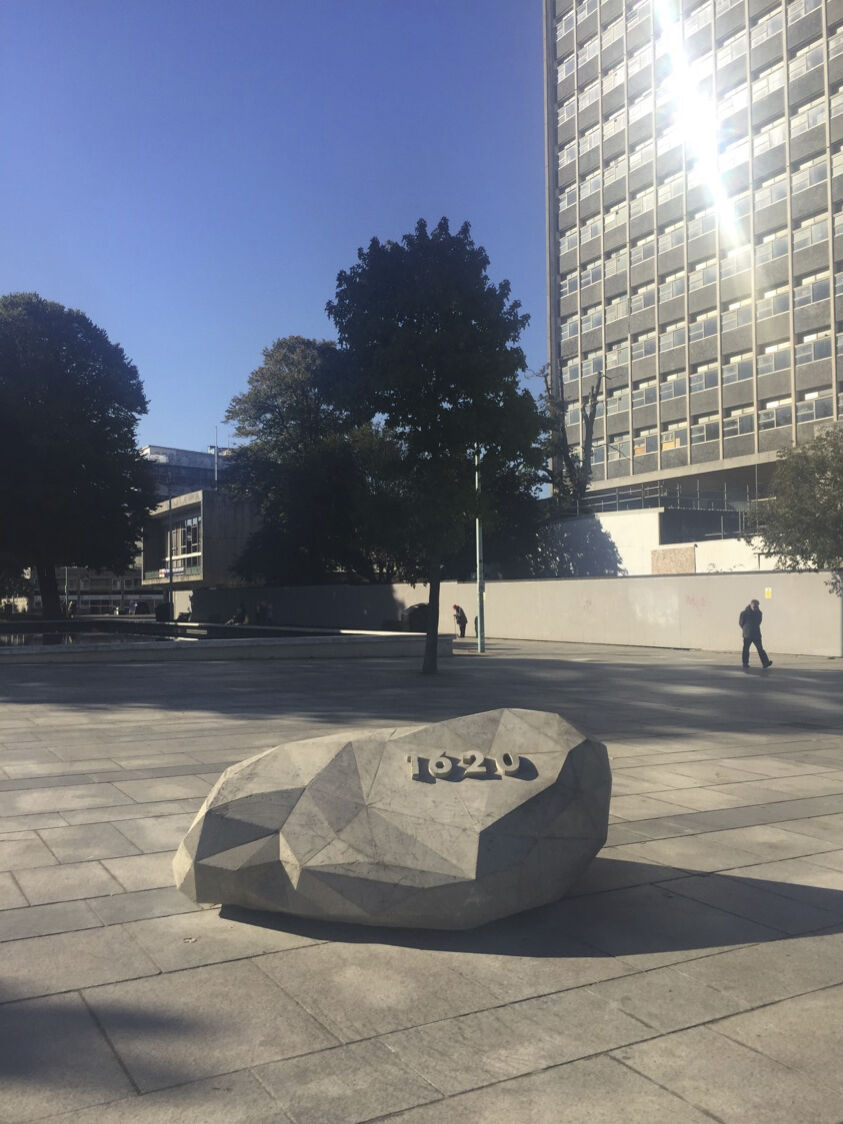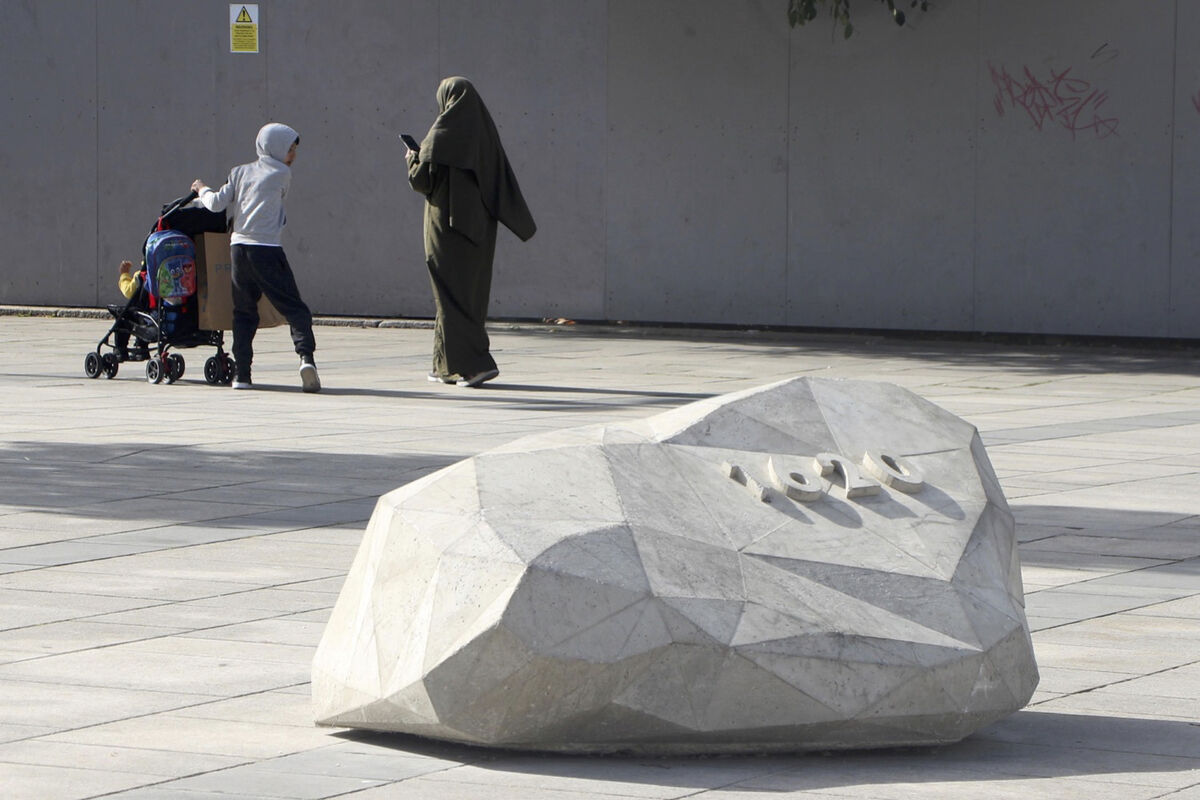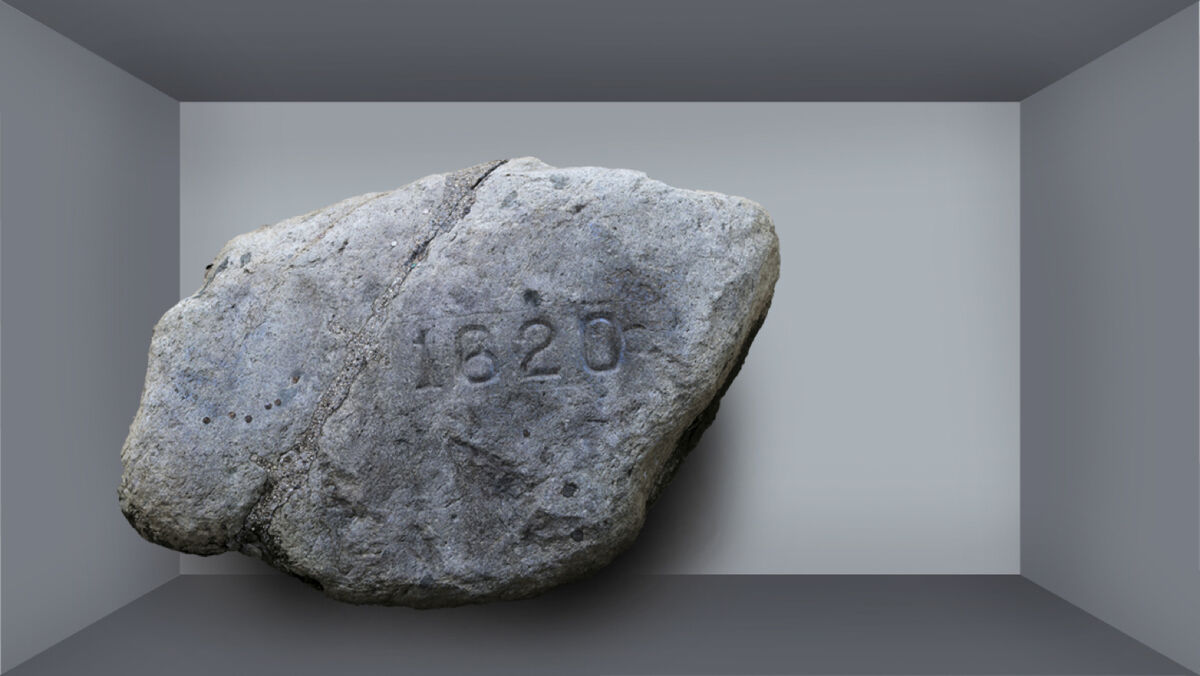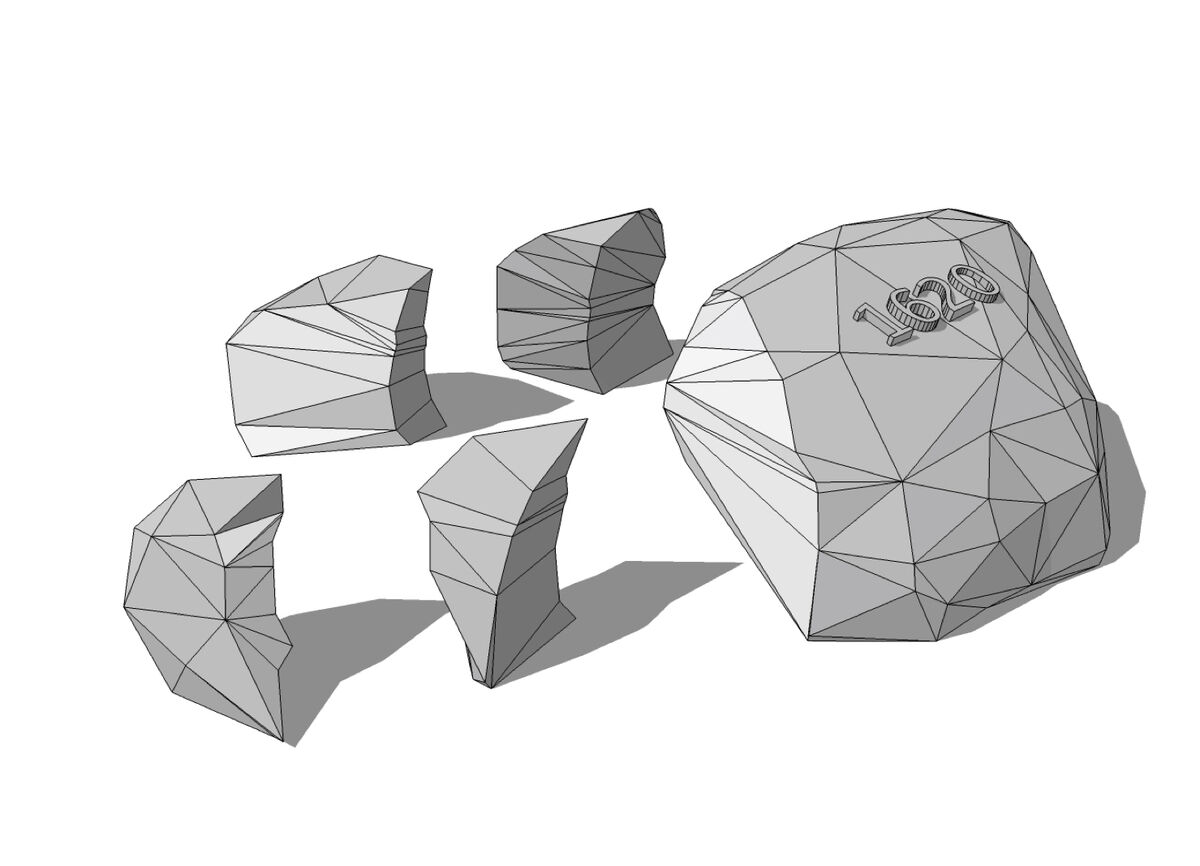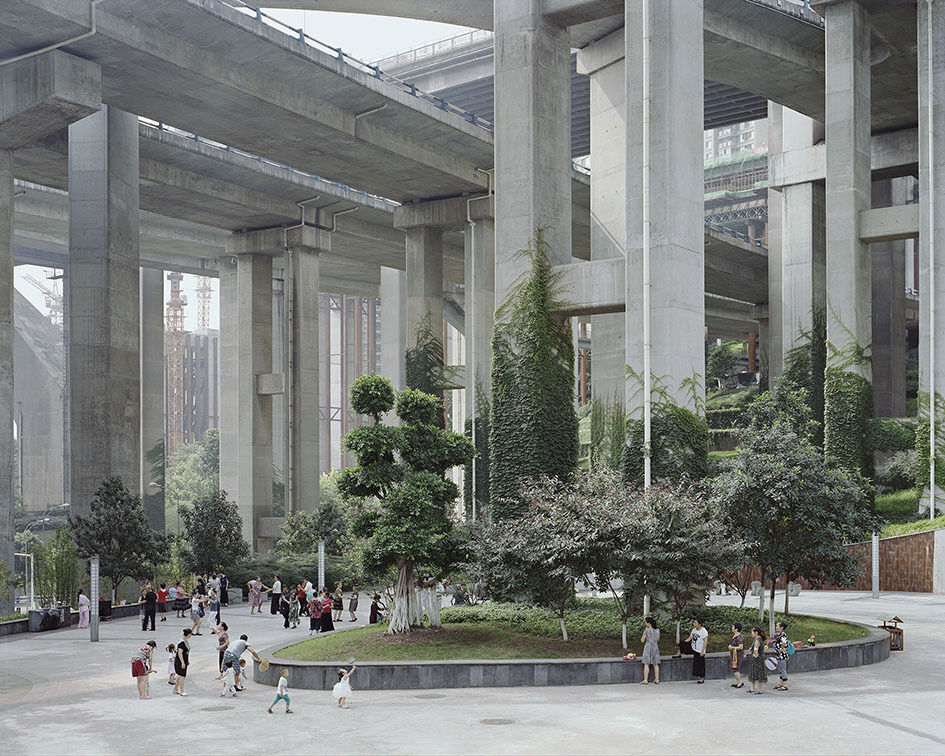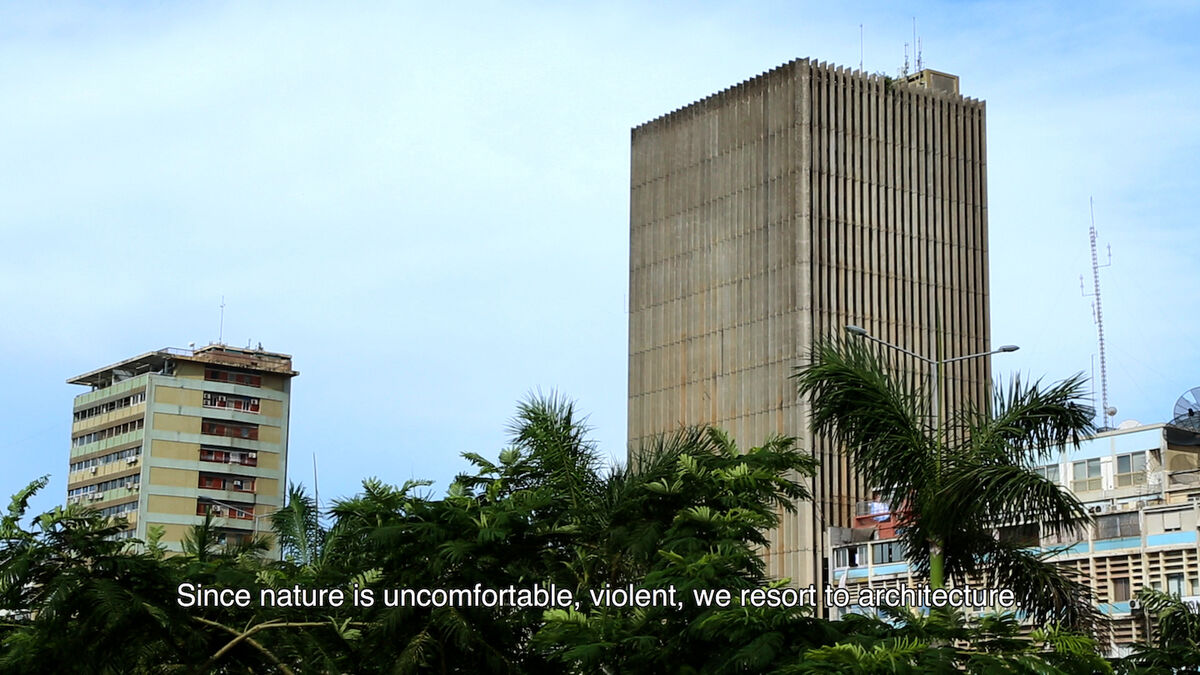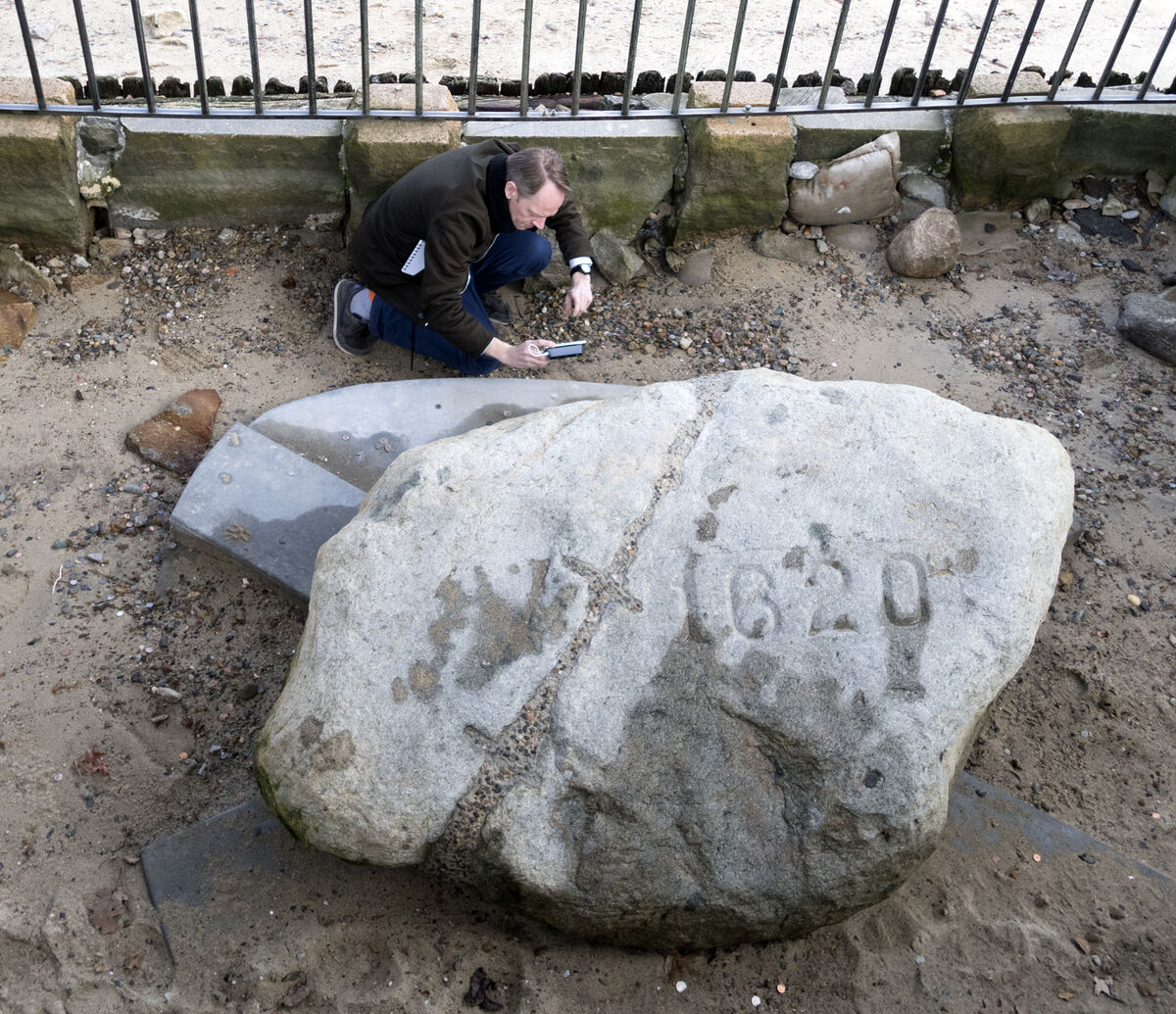
Tommy Støckel’s (b. 1972, Copenhagen) practice centres around investigations into the medium of sculpture, with a conceptual focus on the trajectories of history and their possible futures. The works tend to start with three-dimensional objects, but these are often supplemented with other media such as photographs, billboards, books, architecture models, typefaces and, in one case, a digital keyboard for mobile devices. Taking the Plymouth Rock as the starting point for his new project, Støckel has 3D-scanned the national monument in Massachusetts (recently voted “the second most disappointing visitor attraction in the US”). The Plymouth Rock today is reputedly a fraction of the size of the ‘original’ first footing of the Pilgrim Fathers, eroded by souvenir-hunters, with a comic history of destruction caused by numerous relocations, and then social reconstruction as a symbol of ‘Western freedom’. Along with a physical sculpture, cast in concrete, to be installed on Civic Plaza, Støckel has made a virtual version of the Rock, with its possible further fragmentation and erosion process to be determined by the public through a mobile app.
Armada Way The central pedestrian thoroughfare in Plymouth’s post-war city centre, constructed as part of Sir Patrick Abercrombie’s ‘Plan for Plymouth’ (1943), was envisaged as a grand “garden vista – a parkway making use, with terraces, slopes, steps, pools, avenues and other contrasting features, of the varying levels”. Today it has become a timeline of different visions of the future, from the 1950s ‘Brutalist’ architecture of post-war reconstruction to the 21st century global brand stores, along with the empty premises of Austerity Britain.
